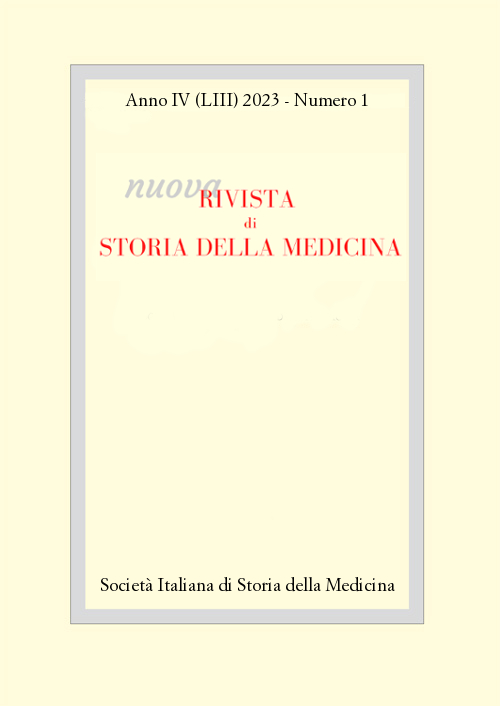Ricostruzione del profilo bioantropologico e paleopatologico delle mummie naturali delle Clarisse Eremite di Fara in Sabina (Rieti)
Progetto di studio
DOI:
https://doi.org/10.13135/2724-4954/7388Parole chiave:
mummie, Italia centrale, bioantropologia, paleopatologia, paleoradiologiaAbstract
I corpi mummificati conservati nel monastero delle Clarisse Eremite di Fara in Sabina sono noti da tempo, ma solo occasionalmente citati nella letteratura paleopatologica. La serie include diciassette mummie e una testa mummificata. Questa comunità monastica di suore francescane, risalente al XVII secolo, seguiva la prima Regola di santa Chiara combinata con una rigida clausura e assoluta fedeltà alle gerarchie ecclesiastiche. All’inizio del 2022 il gruppo di ricerca ha effettuato un sopralluogo preliminare al fine di pianificare lo studio. Le indagini, di tipo conservativo, includono l’esame esterno e studi antropometrici e paleopatologici, effettuati mediante tomografia computerizzata, seguita da campionamento minimamente invasivo finalizzato a analisi paleonutrizionali e paleogenomiche. Lo studio merceologico dei frammenti di tessili rinvenuti all’esame esterno, degli elementi residui del corredo e di qualsiasi aspetto correlato al trattamento postmortale ed alla cura dei corpi aiuterà a gettare luce sulla vita privata della piccola comunità lontano dal mondo. L’indagine fornirà anche elementi importanti sulle caratteristiche genetiche, sullo stato nutrizionale e sulle malattie degli individui.



